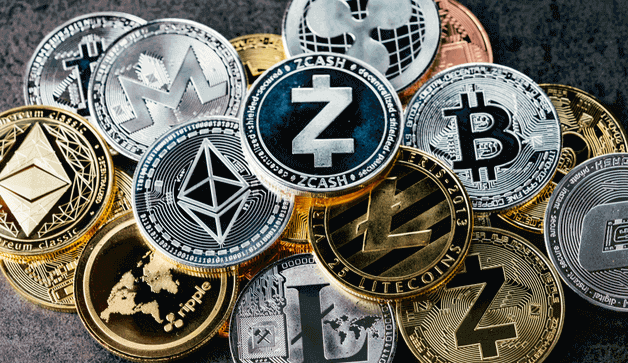
Bridging crypto assets across blockchains opens up liquidity, DeFi, NFTs, and staking opportunities across multiple networks—without relying on centralized exchanges. However, navigating this complex terrain safely and efficiently requires the proper knowledge and tools. Here’s your definitive, up-to-date guide to executing cross-chain transfers with confidence.
What Are Cross-Chain Bridges—and Why Do They Matter?
Cross-chain bridges are specialized software tools that enable the transfer of tokens—or even NFTs—between different blockchain networks. They work by locking or burning tokens on the source chain and minting or unlocking equivalent assets on the destination chainInvestopediaChainlink.
These bridges significantly enhance interoperability, allowing decentralized asset movement outside of traditional exchangesInvestopedia. But they aren’t without risk—most bridges rely on smart contracts or external validators, making them targets for hacking and vulnerability exploitationInvestopediaRedditarXiv+1.
Step-by-Step: How to Bridge Crypto Assets
1. Choose a Reliable Bridge
Pick a bridge that supports both your source and target networks as well as the specific asset you intend to move. Evaluate platforms on:
-
Security – Prefer trustless or decentralised bridges with strong audit records.
-
Speed & Cost – Fees and transaction times vary widely.
-
User Reviews – Look into reliability and reputation.Across Protocolchangelly.comTransakReddit
2. Connect Your Wallet
Use a multi-chain-compatible wallet like MetaMask or Trust Wallet. Make sure you’re connected to the correct source blockchain network before initiating the bridge transferAcross ProtocolTransak.
3. Specify Asset and Destination Chain
Select the token to bridge and your target chain. If the asset isn’t natively supported at the destination, bridges may wrap it with a supported equivalent, like a stablecoinAcross ProtocolTransak.
4. Review and Confirm
Double-check the transfer details—include fees (both bridge and gas), and ensure the correct chain and asset are selected. Missteps can result in lost funds or failed transfersAcross ProtocolTransak.
5. Execute and Monitor Your Bridge
After confirming, submit the transfer. Times can vary depending on the bridge, though some new tools like Across offer near-instant results—around 2 seconds—with minimal costAcross Protocol+1.
6. Verify Completion
If tokens don’t show up immediately:
-
Switch the wallet to the target network.
-
Manually add the token using its contract address.
-
Use a blockchain explorer (e.g., Polygonscan, Arbiscan) to check transfer status.
-
Review your transaction history on the bridge interface.Across Protocol
Popular Bridges in 2025
Here’s a snapshot of leading bridges shaping the landscape today:
-
Portal (Wormhole) – Connects multiple major chains (Ethereum, Solana, Avalanche) with a decentralized guardian networkchangelly.com.
-
BNB Chain Bridge – Built into the Binance ecosystem; supports fast, low-cost transfers between BSC, Ethereum, Solana, and Tronchangelly.com.
-
LayerZero/Stargate – Innovative omnichain protocol using oracles and relayers for secure, native-asset transferschangelly.comMedium.
-
Avalanche Bridge – Fast and user-friendly bridge between Avalanche and Ethereum, backed by hardware-level securitychangelly.comMedium.
-
Axelar – Broad coverage across 50+ chains, enabling developers to build cross-chain dApps with a unified APIchangelly.com.
-
Emerging Bridges – Options like cBridge, Mosaic, OmniBridge, and Ren Bridge provide alternative cross-chain paths for a variety of assets and networksCoin GuidesMedium.
Some protocol-level bridges, like Polkadot’s XCMP (Cross-Chain Message Passing), enable fast and secure peer-to-peer communication between parachains with minimal latency—often under a minuteWikipedia.
Real User Insight
From a developer’s perspective:
“1) The user sends asset A to the deposit address of the origin chain…
2) Asset A is locked…
3) Equivalent amount… is issued in the target chain…
4) If reclaiming, send A1 back to unlock A.”Reddit
Security: Proceed with Caution
The cost of innovation can be steep. Over $2 billion in assets were stolen in cross-chain bridge hacks in 2022, including the infamous Ronin Bridge breach (~$625M)RedditarXiv.
Academic research outlines multiple attack vectors and vulnerabilities across bridges—highlighting the importance of audits, decentralization, and advanced defense mechanismsarXiv.
Final Thoughts
Bridging crypto assets unlocks a multi-chain world, but requires cautious execution. By following a structured process—choosing secure platforms, confirming transfers meticulously, and keeping up with emerging tools—you’ll bridge with confidence. Always prioritize safety, start small, and verify thoroughly.


